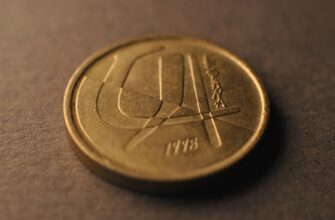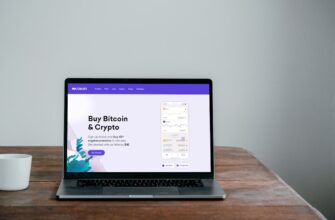- XRP Number of Coins: Understanding Supply, Circulation, and Distribution
- What is the Total Supply of XRP?
- How Many XRP Coins Are in Circulation?
- The Distribution of XRP Coins
- Why is the XRP Supply Fixed at 100 Billion?
- The Role of Escrow in XRP’s Supply Management
- How to Check the Current XRP Supply
- Frequently Asked Questions (FAQ)
XRP Number of Coins: Understanding Supply, Circulation, and Distribution
When evaluating any cryptocurrency, understanding its supply dynamics is crucial. For XRP, the digital asset powering Ripple’s payment ecosystem, the “number of coins” refers to its fixed total supply, circulating amount, and unique distribution mechanism. Unlike mined cryptocurrencies like Bitcoin, XRP’s entire supply was created at its inception, making its economics fundamentally different. This guide breaks down everything you need to know about XRP’s coin metrics and why they matter for investors and users.
What is the Total Supply of XRP?
XRP has a fixed total supply of 100 billion coins, all created when the ledger launched in 2012. This contrasts sharply with cryptocurrencies that use mining, where new coins enter circulation over time. The 100 billion XRP cap is hardcoded into the XRP Ledger’s protocol and cannot be increased, ensuring predictable scarcity. This design eliminates inflation risks from new coin creation, positioning XRP as a deflationary asset as transaction fees permanently remove tiny fractions of XRP from circulation.
How Many XRP Coins Are in Circulation?
As of 2023, approximately 53-54 billion XRP are in active circulation, representing just over half the total supply. The remaining coins are held in escrow by Ripple and released systematically. Key factors affecting circulation include:
- Escrow releases: Ripple distributes up to 1 billion XRP monthly from escrow contracts.
- Market absorption: Released coins enter circulation only when market demand justifies distribution.
- Transaction burns: A tiny fraction of XRP (≈0.00001 XRP per transaction) is destroyed, slightly reducing supply over time.
Note: Circulating supply fluctuates monthly—always verify real-time data via explorers like Bithomp or XRPScan.
The Distribution of XRP Coins
XRP’s 100 billion coins were initially distributed as follows:
- Ripple’s allocation: 80 billion XRP (80%) held by the company to fund operations and partnerships.
- Founders and team: 20 billion XRP (20%) distributed to creators and early contributors.
To ensure market stability, Ripple placed 55 billion XRP into cryptographic escrow in 2017. These escrows release coins in declining monthly installments over 55 months, with unspent amounts returning to new escrow contracts. This mechanism prevents sudden supply floods while funding Ripple’s ecosystem development.
Why is the XRP Supply Fixed at 100 Billion?
XRP’s fixed supply serves three core purposes:
- Predictability: Eliminates uncertainty around future inflation, making XRP attractive for institutional payment systems.
- Efficiency: Prevents energy-intensive mining, enabling faster transactions (3-5 seconds) and lower fees.
- Scarcity control: Managed escrow releases prevent market saturation while ensuring sufficient liquidity for global payments.
The Role of Escrow in XRP’s Supply Management
Ripple’s escrow system acts as a supply regulator:
- 55 billion XRP locked in 55 monthly contracts (1 billion per contract).
- Unused coins each month revert to new escrows at the end of the queue.
- Transparency: All escrow transactions are visible on the XRP Ledger.
This creates a 45-year distribution schedule that balances market growth with price stability, distinguishing XRP from volatile, mining-based cryptocurrencies.
How to Check the Current XRP Supply
Verify real-time XRP metrics using these trusted sources:
- XRPScan: The official explorer (xrpscan.com) shows total/circulating supply under “Ledger” stats.
- Bithomp: Features detailed supply breakdowns including escrow holdings (bithomp.com).
- CoinMarketCap/CoinGecko: Track circulating supply and market cap rankings.
Tip: Cross-reference data across platforms for accuracy, as circulating figures adjust with escrow releases.
Frequently Asked Questions (FAQ)
- Will more than 100 billion XRP ever exist?
- No. The XRP Ledger protocol prohibits creating additional coins. The 100 billion cap is immutable.
- How often does circulating supply change?
- Monthly, when Ripple releases up to 1 billion XRP from escrow. Actual circulation increases depend on market demand.
- What happens to unsold escrowed XRP?
- Unreleased coins return to escrow in new contracts ending 55 months later, creating a rolling distribution cycle.
- Does XRP have inflation?
- Technically no, as no new coins are minted. However, escrow releases increase circulation, while transaction burns cause mild deflation.
- Who controls the undistributed XRP?
- Ripple manages escrow releases but cannot alter the total supply. The ledger’s decentralized validators enforce protocol rules.
Understanding XRP’s coin metrics—its fixed 100 billion supply, managed circulation, and transparent escrow system—provides critical insight into its economic model. Unlike inflationary currencies, XRP’s design prioritizes stability and scalability for global payments, making its supply mechanics fundamental to its long-term value proposition.








